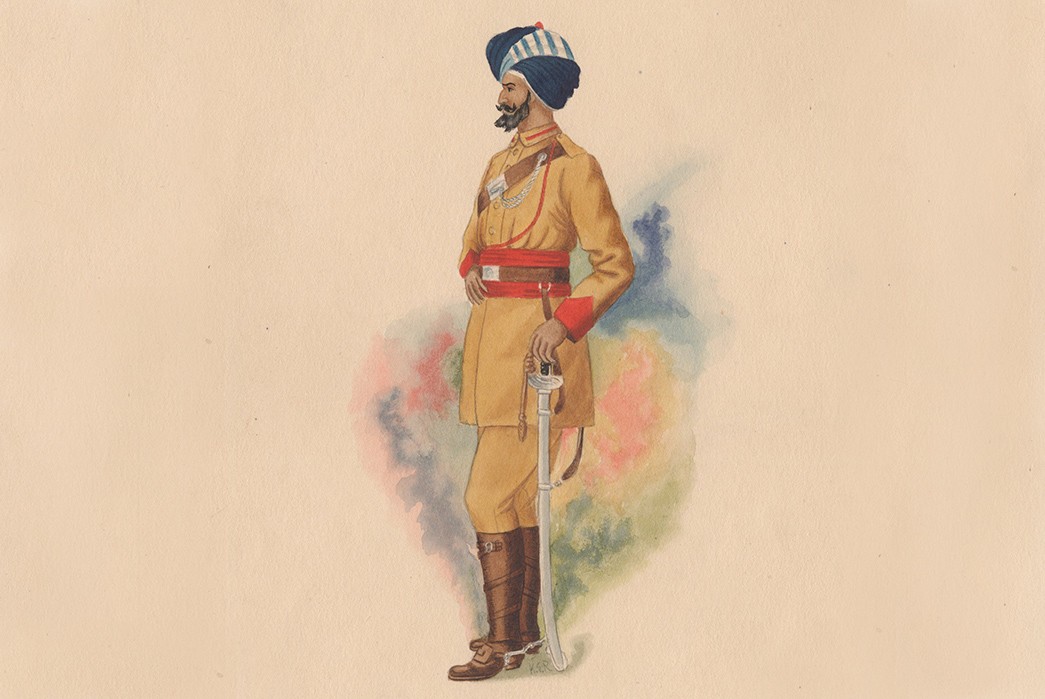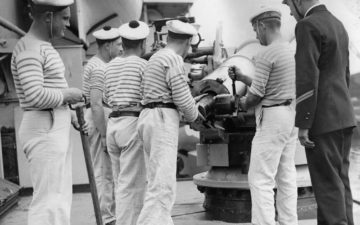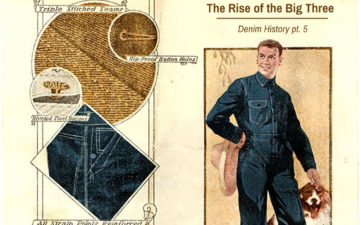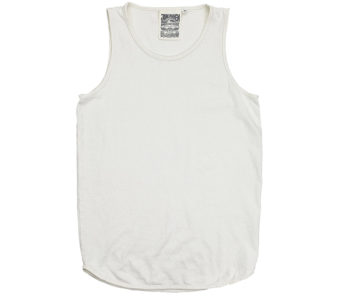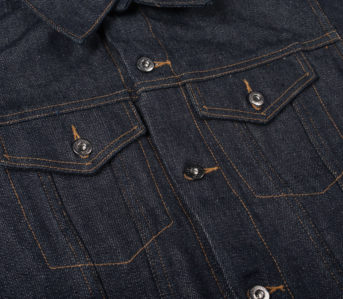Khaki is a color. Not a cut, not a fabric, but simply a color. And yet, most folks seem to use the word interchangeably for “chinos” or as a placeholder for a lightweight cotton twill. To clear up the common misconceptions about khaki, the color, and the popular pieces of clothing that have been dyed in this evocative (though often dorky) hue, we must go back. Way back. To the latter half of the 19th century, when khaki was not just associated with dads at barbecues, but instead with staying alive in hostile, foreign territory.
What is Khaki?

Khaki Swatch via Scheme Color.
Whilst the term khaki refers to a color, many different tones can be referred to as khaki. Garments in the colors shown in the above swatch could all be referred to as khaki, with the khaki rainbow consisting of varying degrees of tan, brown, and brownish-green. This is why you will see the term ‘khaki green’ used to describe garments that, in reality, are a light shade of olive.
In the historical and traditional sense, khaki is a light shade of tan. The term itself is a loanword from the Persian word خاک [χɒːk] “khâk” which means ‘soil’. The below shot of Buzz Rickson’s reproduction of some WWII Khaki chinos represents a classic iteration of khaki perfectly.
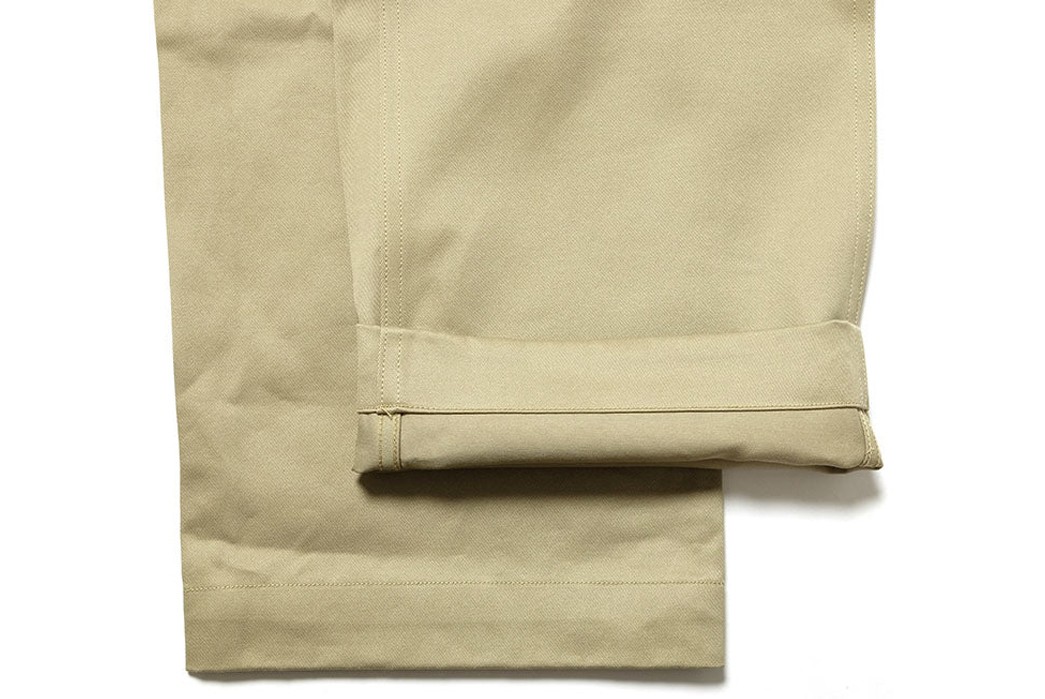
A close-up of Buzz Rickson’s’ M43036 Early Military Chinos via Hinoya.
In The Beginning
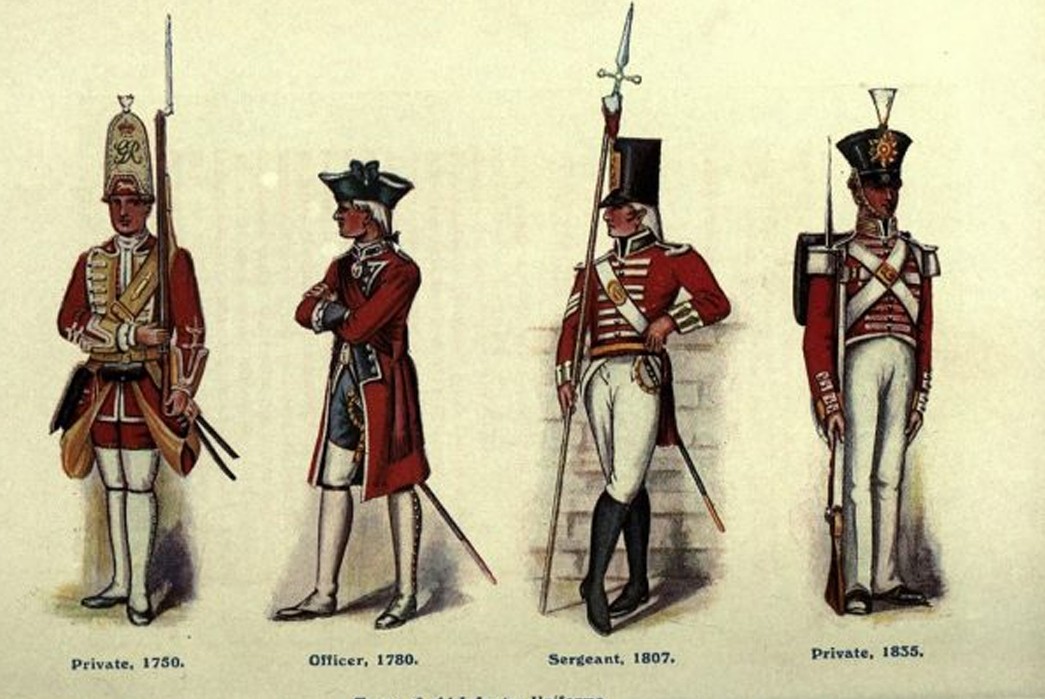
The-History-of-Khaki-Anything-But-Drab-British-Infantry.-Image-via-Cjsmenswear.
Khaki, like many of our favorite menswear staples began life as a military advancement. One that was only begrudgingly adopted. Khaki, as most historians will point out is a loanword from Hindustani, one that means “soil-colored.” Khaki, the color, was first worn by the British Indian Army, specifically the Corps of Guides, in 1846. This particular unit, assembled and led by Henry Lumsden, was for the most part comprised of natives, dragooned into serving the British cause in skirmishes near the Peshawar border. By now 70 years into their occupation of India, the English were still wearing the woolen red uniforms they’d used since Cromwell’s day. The heavy weight of their uniforms and the bright colors were absurdly impractical in battles in the sweltering Indian heat, but they were a symbol for the prototypical Englishman’s imagined superiority over the natives.
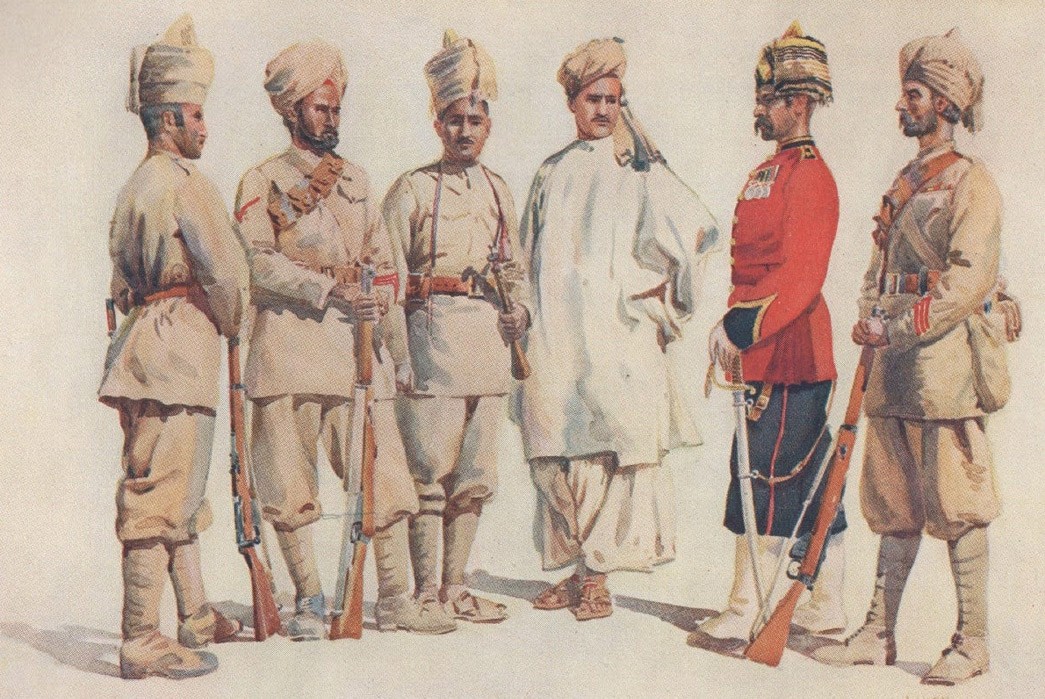
19th Punjab Regiment: Painting by Major A. C. Lovett. Image via Medium.
By the late 1800s, it was becoming clear just how impractical the red uniforms were. The advent of smokeless gunpowder and combat with native troops, who refused to simply line up and get shot at like most European armies, were clear indicators that warfare was changing. Only several decades before, back in major European conflicts, opposing armies would simply line up and fight one another, totally obscured by the smoke from their weapons. So the savvier English officers present in the Corp of Guides noticed how their Indian privates wore only lightweight cotton garments and smeared them with soil and even tea to blend into their surroundings. Two years later, in 1848, the first official khaki uniforms were issued.
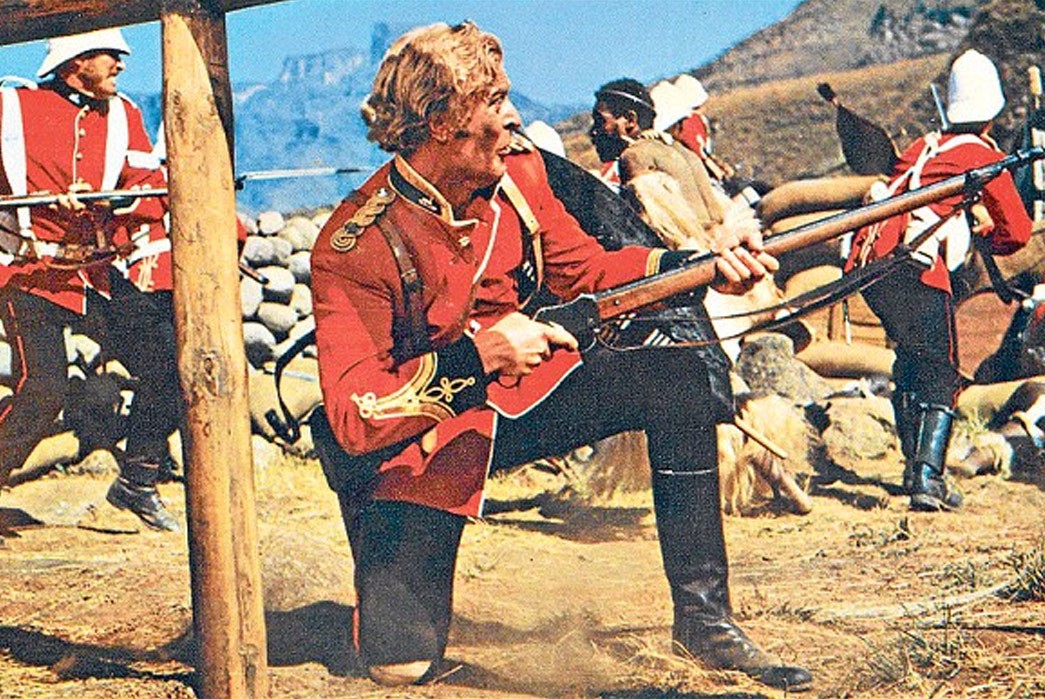
Michael Caine in the film “Zulu,” which featured period-accurate redcoats. Image via The Telegraph.
Even the stodgiest and most stiff-upper-lipped of British officers could see the value of the cotton twill-dyed khaki, but it took almost 50 years for the new uniforms to be fully embraced. Though they saw wear in the First Boer War, other notable English colonial campaigns (in very hot places) were fought in those same old redcoats. Despite the reluctance at higher levels to formally adopt khaki, British troops, when they were issued bright, white uniforms, would smear them with all manner of things give their uniforms a khaki hue, even if it was an imperfect and primitive dyeing method. A perfected khaki dye was patented right before the Second Boer War in 1899 and the color of the British uniform remained more or less the same all the way through the two World Wars.
Americans Adopt the Hue
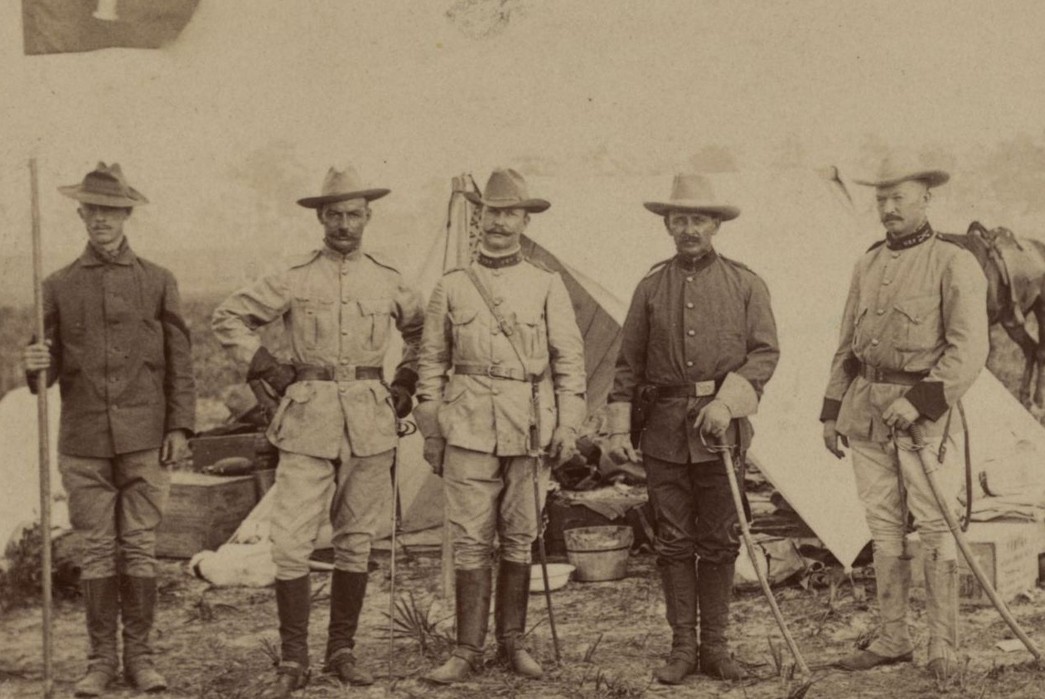
Future President Theodore Roosevelt and some fellow “Rough Riders” during the Spanish-American War. Image via the Theodore Roosevelt Center.
Tried and tested by all the major powers, khaki-dyed, lightweight cotton twills became the de facto uniform for any colonizing power. If you were going to ship your boys abroad to pillage and conquer someplace in the Southern Hemisphere, khaki was your go-to color. Americans wore the color for the first time in Cuba and the Philippines during the Spanish-American War in 1898. The trousers the American troops wore became called “chinos,” allegedly because they had been imported from China and borrowed the Spanish word for that country to describe them. Perhaps because the first chinos were khaki and the most notable khaki garments were made from a cotton twill, all three pieces of the puzzle began to be confounded.
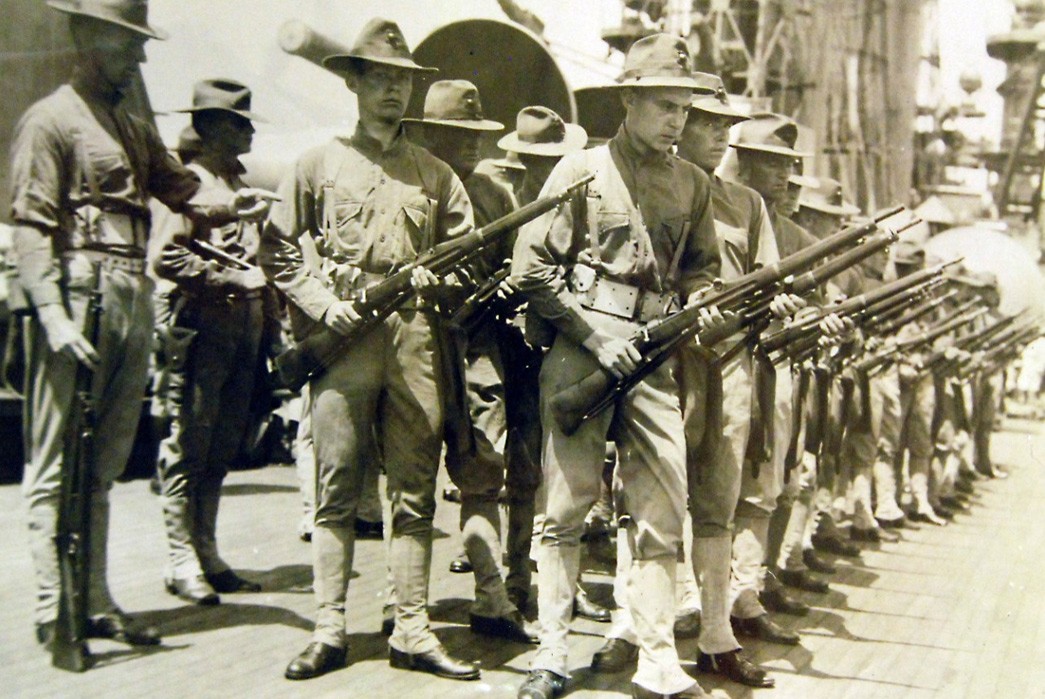
American Expeditionary Forces, WWI. Image via Naval History and Heritage Command.
American Expeditionary Forces, when they joined the fray during World War I, were again wearing khaki. Their chinos, adapted from those worn during the Spanish-American War were worn tucked into puttees (coincidentally another Hindi word), giving them a peculiar jodhpur-esque look.
World War II and the Proliferation of Khakis
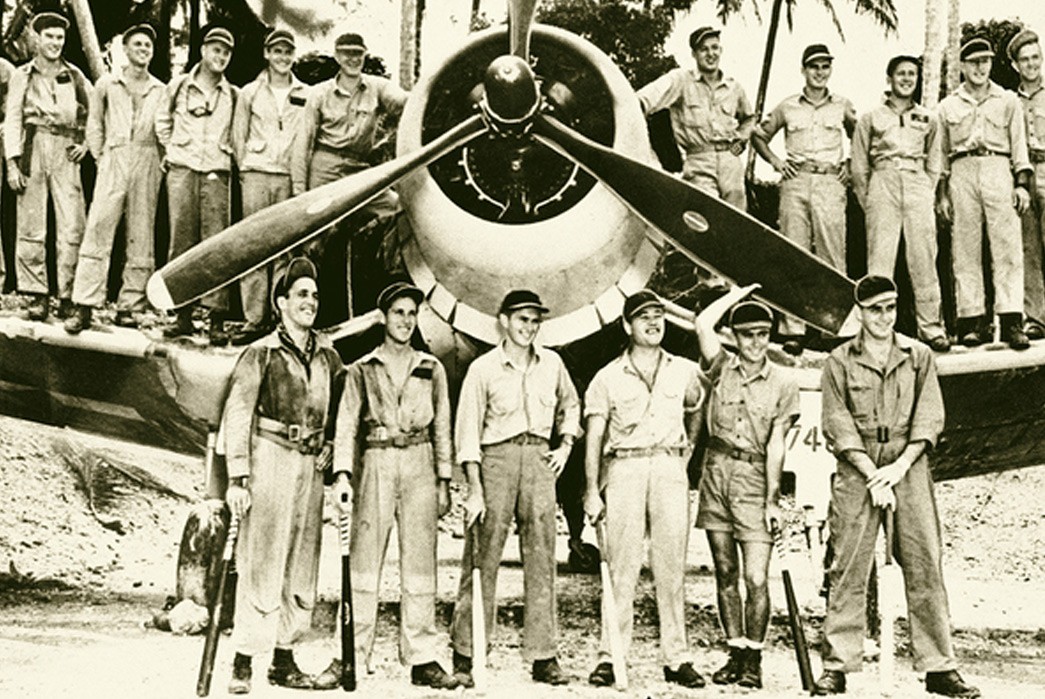
Image via the Seattle Times.
Though the khaki chino had seen service for nearly a hundred years by the time World War II began, it would be that conflict that truly brought these so-called “khakis” to the general public. It was also during World War II, particularly worn by American troops in the Pacific Theatre, that the khaki chino reached its zenith.
Preceding iterations of the khaki trouser seem dated, with their flared thighs for riding and narrow bottoms for tucking into leg wraps. The World War II service chino ballooned into an entirely new and much larger garment, with a very high rise and an extremely wide leg. Though the slim-leg-favoring fashionistas might think this seems sloppy, the enlarged proportions made for far greater comfort in the tropical climes in which they were worn. Not only this, but this new cut heightened an impression of “I don’t give a fuck,” for which American troops were infamous among their allies. While almost all other uniform pieces sought to enhance and highlight the so-called “military body,” the American khaki service chino only highlighted the waist, the rest was all comfort and no shits given.
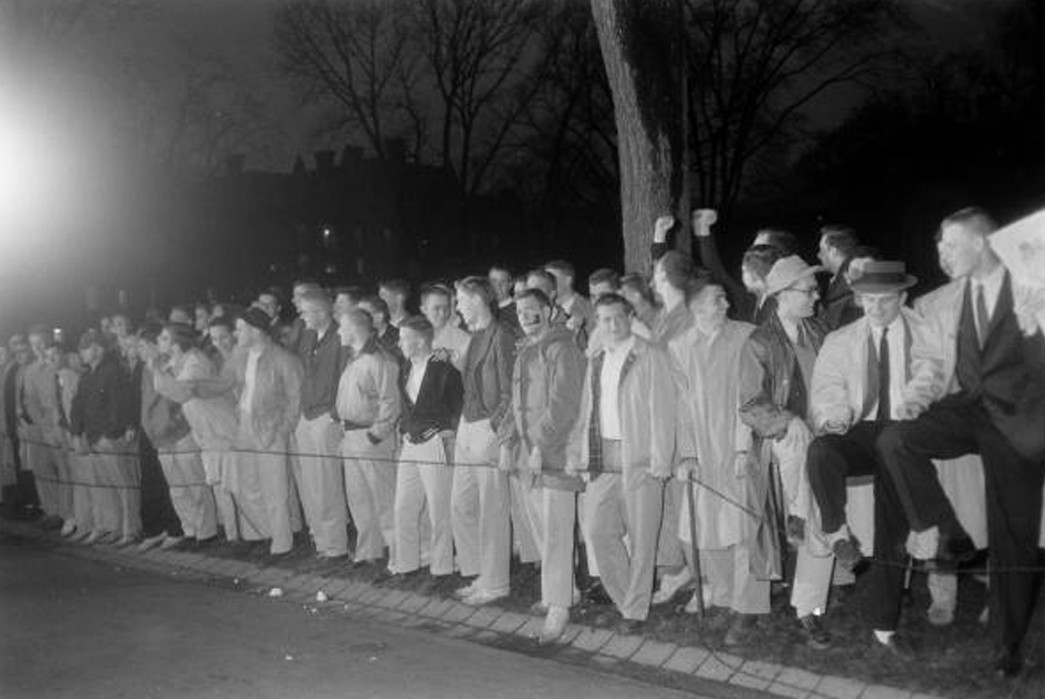
Princeton students and Faculty, 1957. Image via Ivy Style.
The khaki chino came home for the first time upon the war’s end. So much khaki twill had been made for the war effort that wartime contractors had extra rolls to whip into civilian clothing. Not only that, but the muted natural hue gained some patriotic caché for its prominent role in most of the armed forces’ uniforms. By wearing khaki, you weren’t just getting in on a trendy military-inspired garment, you were also supporting the troops! The larger profile of the service chino made for plenty of comfort, which made them a huge hit on college campuses nationwide. And the fact that they were made from durable cotton and not some fussy wool, made them way easier to take care of and keep clean.
The Long Decline
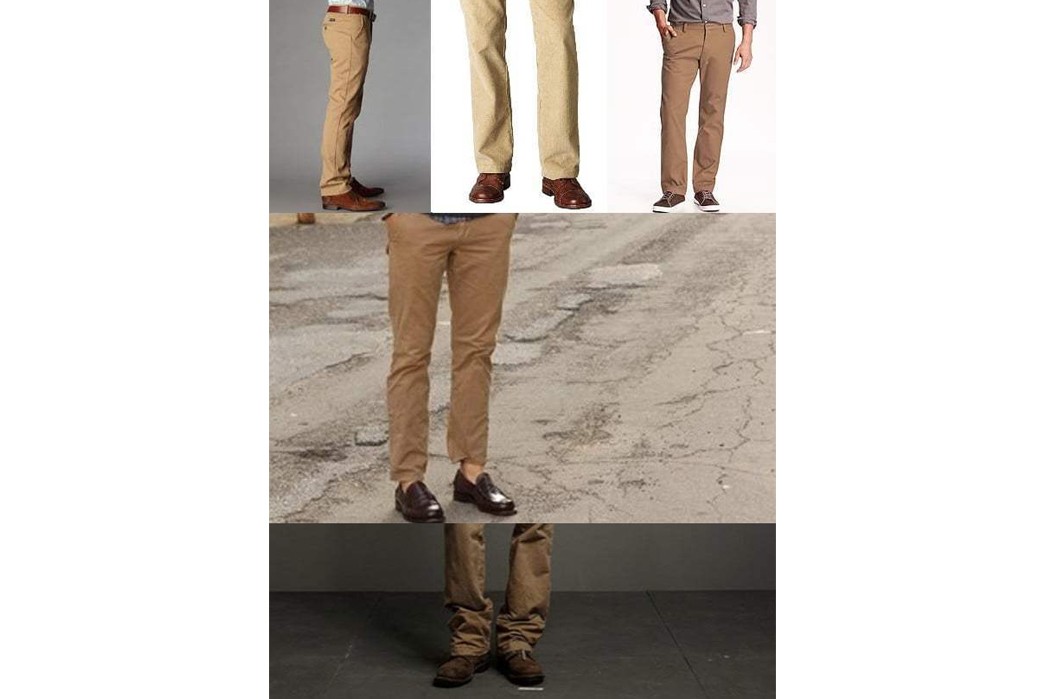
Heinous. Image via Onesouthernman.
Never as rugged or debonair as when it was worn in the Pacific War, the khaki chino has slowly slipped from its WWII pedestal to the sale rack at your local J.C. Penny’s. Khaki pieces of clothing, not unlike jeans, haven’t reached their full potential until sufficiently beaten up and lived in. The 1960s saw the chino slimmed down for a youth market hungry for new colors, fits, and synthetic options. Dockers and the like have lowered the rises and tapered the legs, making them less an endimanché statement piece, but a Walmart uniform.
Though the color khaki has a troubled record, often tied to brutal, colonial warfare; there is something essential about this most subtle of camos. It pairs well with just about anything and garments cut from this cloth were so ubiquitous after WWII that they are readily available in just about any style at your local vintage emporium. Though the fit and fabric may change, the color is timeless.
Quality Goods in Khaki
A range of Heddels-approved garments in true khaki colorways.
Buzz Rickson’s Military Chinos – 1942 Model
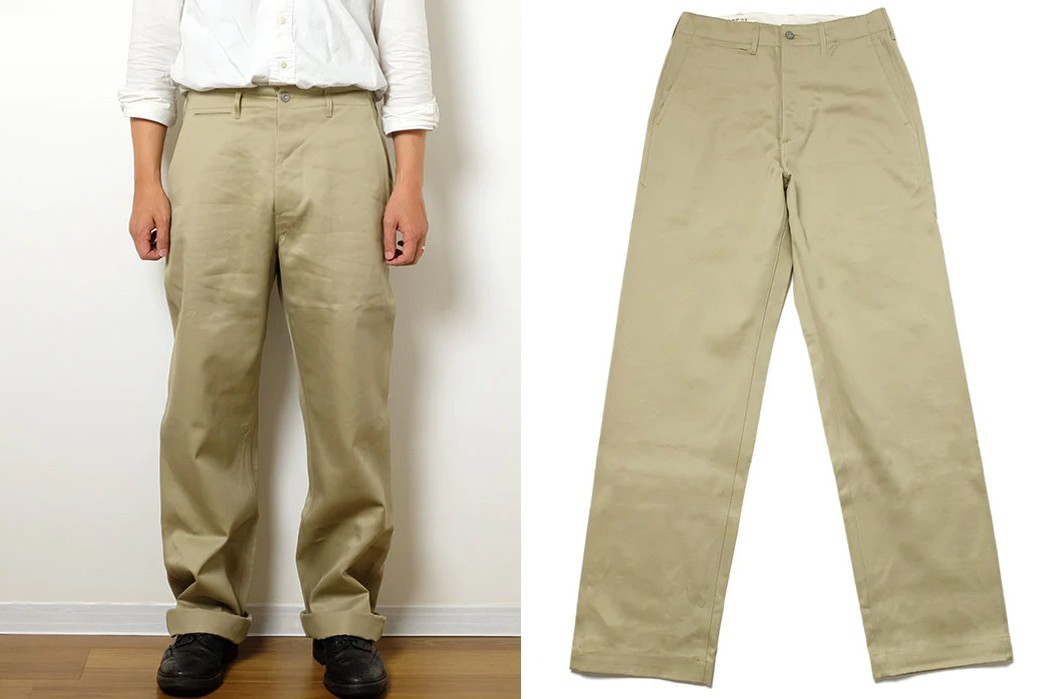
Buzz Rickson’s is best known for its meticulous reproductions of naval and military garb and its Early Military Chinos are one of the brand’s perennially produced pieces. The product comes in three silhouettes, 1942, 1945, and a modern ‘Original Spec’, each produced in Japan to high standards of construction and attention to detail.
The 1942 silhouette shown here is the widest of the three, offering a full leg with a deep rise. In addition to a period-correct wide fit that can easily slot into the modern wardrobe, the Buzz Rickson’s Early Military Chinos 1942 Model comes in a high-density uniform twill made up in a gorgeous khaki tone that stays true to the originals (Buzz deconstructed original examples to formulate the right fabric). Other details include engraved metal buttons, natural twill pocket bags, and military-style size stamping inside the waistband.
Available for $140 from HINOYA.
Iron Heart Whipcord N-1 Deck Jacket
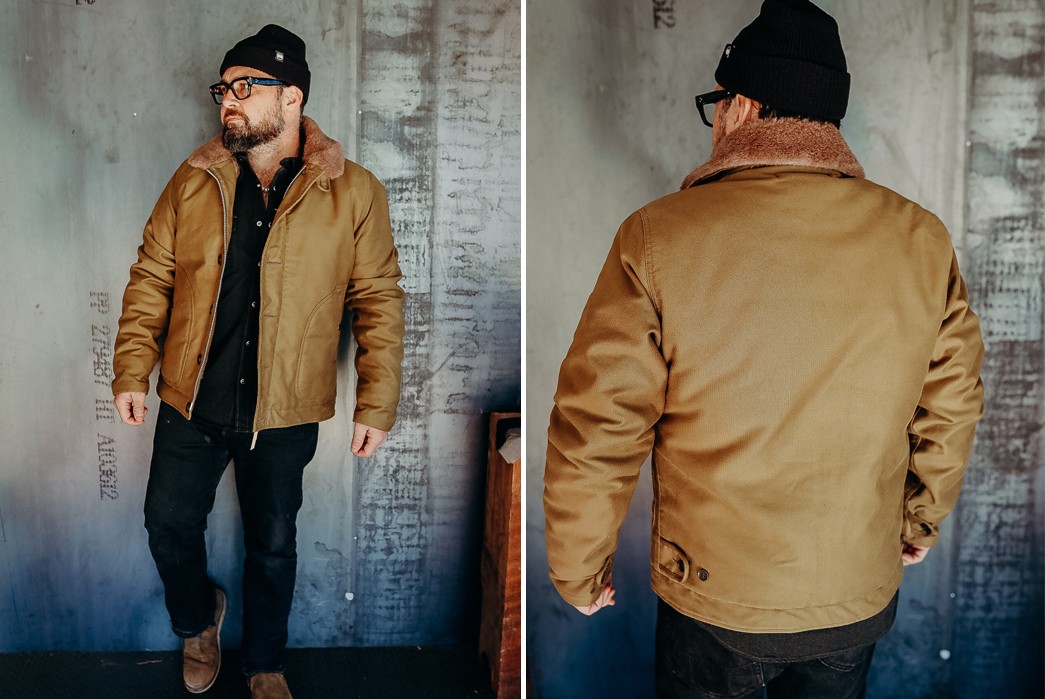
Iron Heart has a way of taking a historic garment and engineering it to its own rugged standards, all while keeping the essence of the source garment completely visible. Case in point? The brand’s Whipcord N-1 Jacket. Now, this garment is pretty close to an original N-1, but Iron Heart’s procurement of top-drawer materials on top of some quality-of-life improvements make its Whipcord N-1 arguably a more formidable piece than those issued in WWII.
Whipcord, seen here in khaki, is very similar to the heavily corded grosgrain ‘Jungle Cloth’ deployed on original N-1s. This fabric shines with the wool/alpaca blend lining and collar providing some subtle contrast in both tone and texture. The aforementioned quality-of-life improvements come in the form of updated ergonomic pocket placement, a two-way YKK zipper to help you customize the fit, and quilted satin-lined sleeves for ease of wear.
Available for $750 from Iron Shop Provisions.
Belafonte Ragtime 2Tack Army Chino
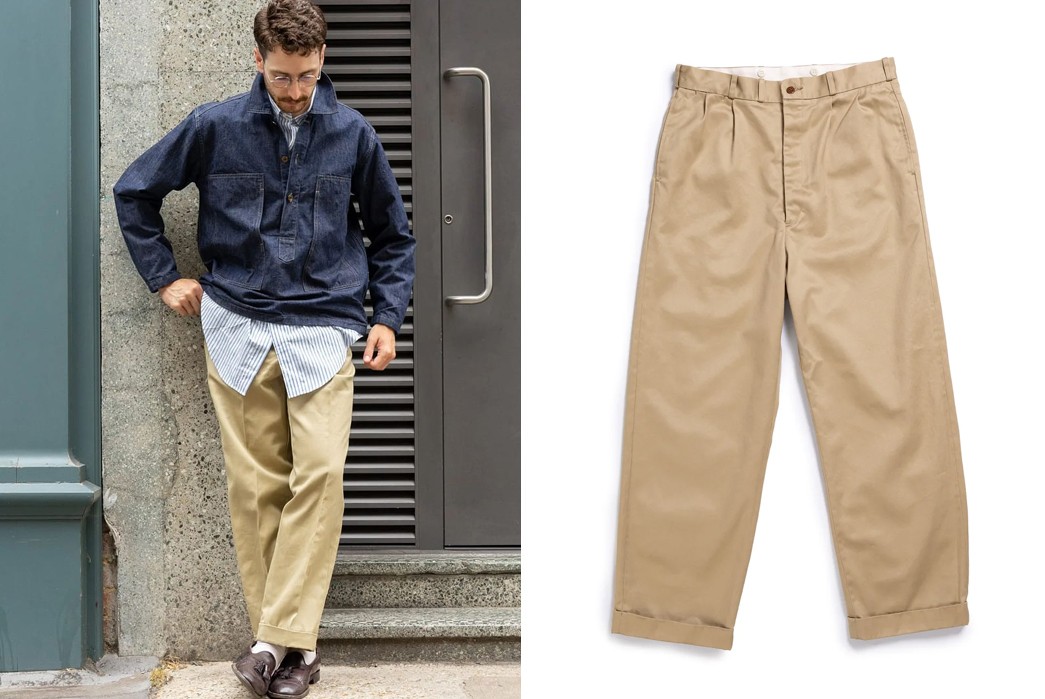
For a slightly more tailored take on vintage khaki military chinos, look no further than Japanese imprint, Belafonte Ragtime, and its 2Tack Army Chino.
Made from high-density cotton twill in a classic khaki colorway, the 2Tack Army Chino is based on WWII-issue chinos but with tailored details that set them apart from a blunt reproduction. Pleats on the front articulate the top block whilst darts above the rear pockets tidy up the seat, with inseam pockets providing a cleaner look than slash pockets of military originals. Suspender buttons have been added to the internal waistband, too, allowing these Chinos to be dressed all the way up. Each pair is made in Japan and come
Available for $330 from Clutch Cafe.
Iron Heart IHJ-126-KHA 12 oz. Whipcord Modified Type III Jacket – Khaki
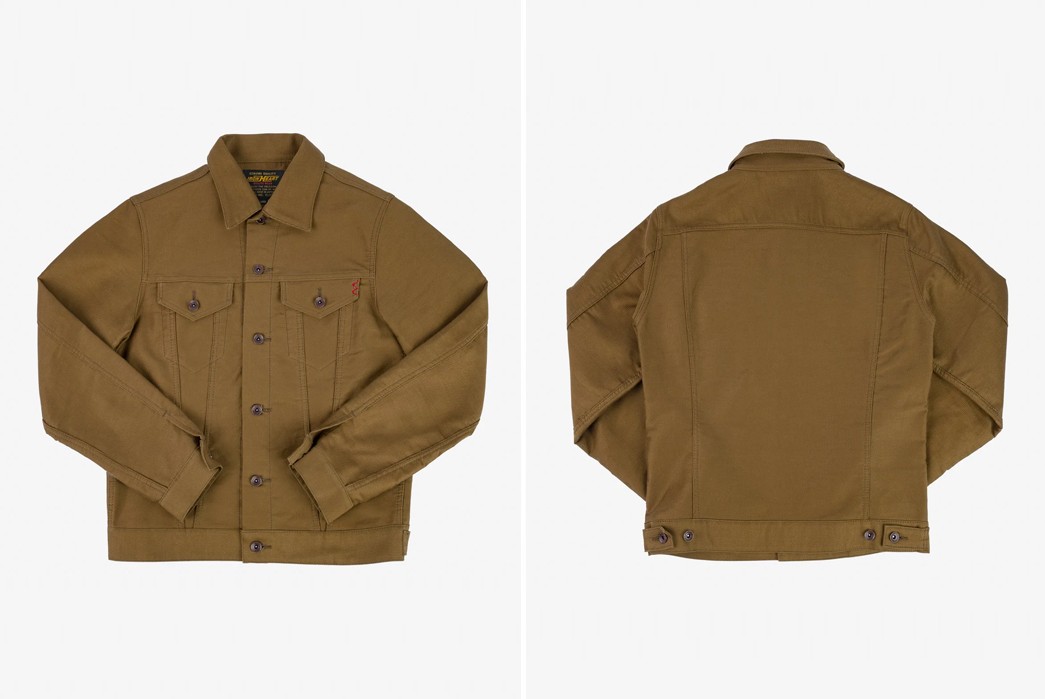
Iron Heart’s khaki whipcord is available on a classic trucker silhouette, too, with the IHJ-126-KHA 12 oz. Whipcord Modified Type III Jacket.
Stepping away from denim, this rendition of Iron Heart’s Modified Type III is made from 12 oz. whipcord in a goldish-khaki colorway that has been reactive dyed to reduce fading. IH’s ‘Modified’ Type III silhouette is longer in the torso than original 60s Levi’s examples and comes with handwarmer pockets which were included on later Type IIIs. Each piece is made in Japan and comes fitted with custom hardware, an adjustable waistband, fully felled internal seams, and The Works Inc. embroidery on the left chest pocket.
Available for $375 from Franklin & Poe.
UES 11 oz. Twisted Yarn Safari Shirt – Khaki Gold
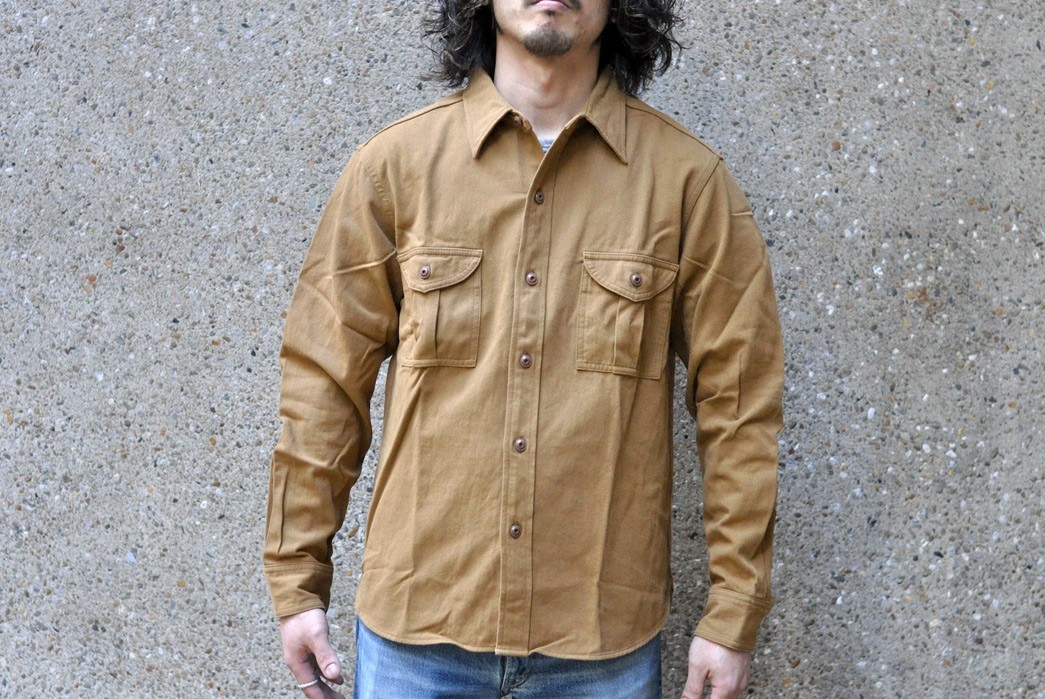
The khaki color is synonymous with safari, and UES has paid homage to this with its 11 oz. Twisted Yarn Safari Shirt in Khaki Gold.
Killing animals in Africa sucks but this UES shirt rules. Made in Japan, it’s constructed from an 11 oz. cotton twill that has been woven slowly with twisted yarns to create a durable and highly textured fabric. Dual gusseted chest pockets and ventilation holes at the armpits add to the utilitarian aesthetic of this workshirt, with brown Urea buttons adding vintage flavor.
Available for $220 from Corlection.
Samurai SJ48CP 15 oz. Heavy Khaki Wide Chino
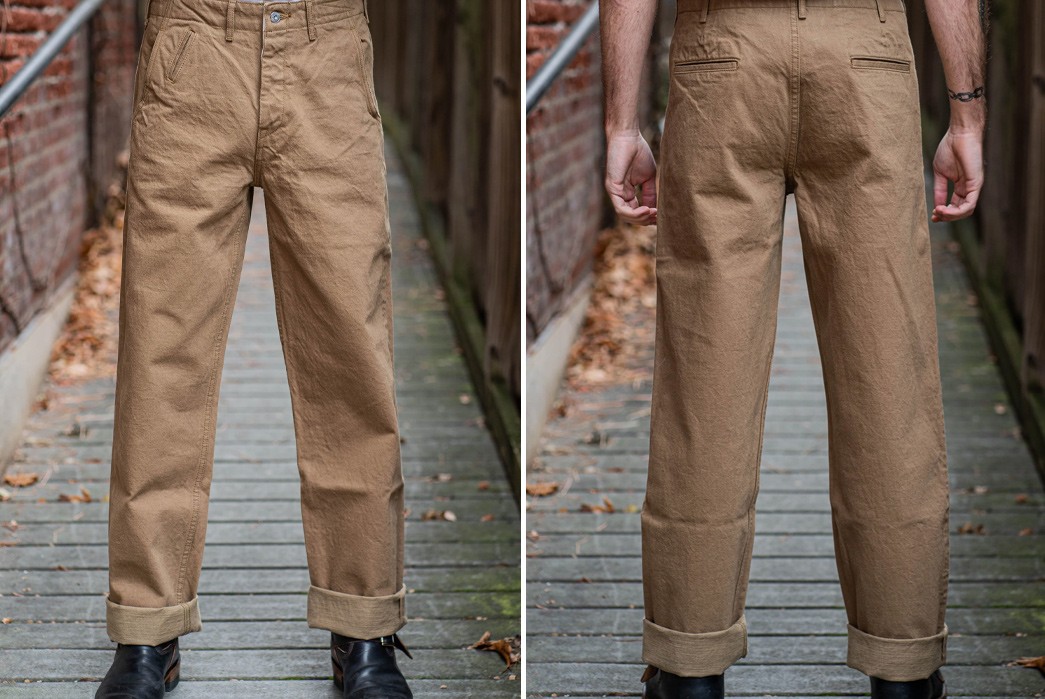
Leave it to Samurai to make the crunchiest and most rugged khakis known to man. Made from a sulfur-dyed 15 oz. selvedge chino twill, these Chinos are based on vintage work pants, meaning they have a wide fit with a high rise. The fabric has Samurai’s signature silver ‘sword’ selvedge ID, and will fade over time thanks to the sulfur-dyeing process.
Each pair is handmade in Japan and comes with custom branded hardware and jacquard natural twill pocket bags.
Available for $335 from Franklin & Poe.

